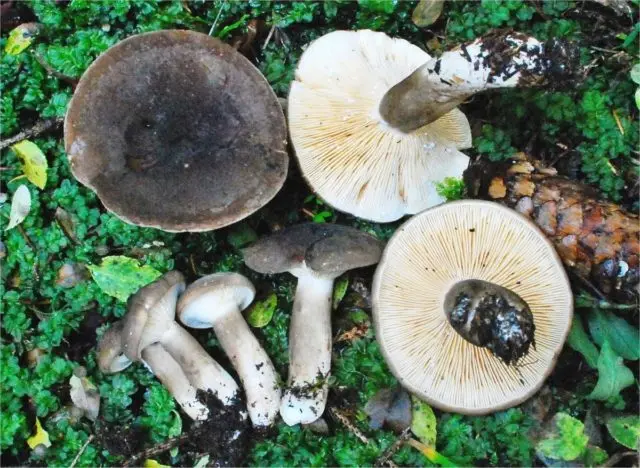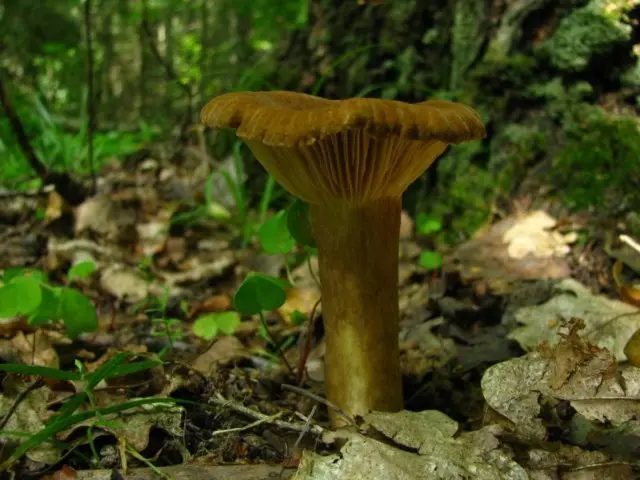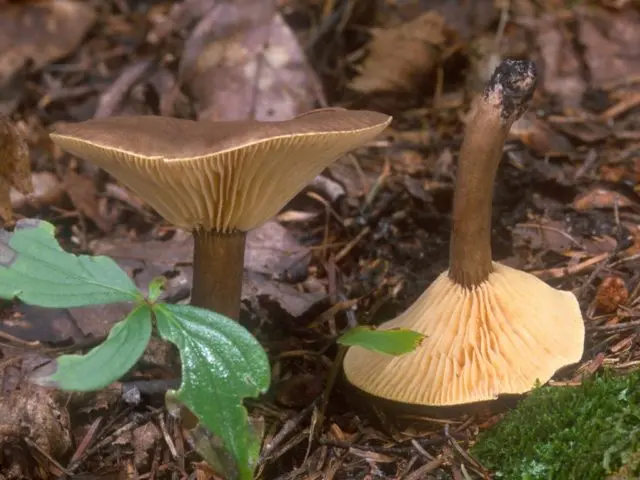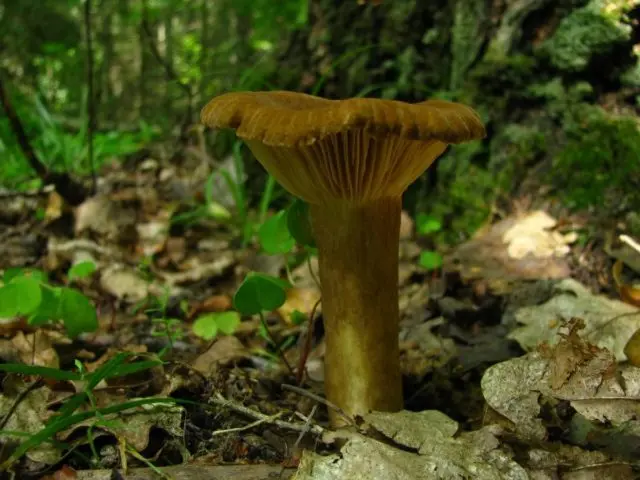Contents
Resinous black lactarius (lactarius picinus) is a representative of the Russula family. There are also a number of other names for this species: resinous black breast and resin lactic. Despite the name, the fruiting body is brown rather than black.
Where the resinous black mushroom grows
This species grows within the temperate climate zone, preferring mixed and coniferous forests. It occurs quite rarely. It grows both singly and in small groups. It is located near pine trees, prefers grassy places. Favorable time for fruiting is the period from August to September.
What does a resinous black milky look like?

The fungus prefers acidic and sandy soils.
At the initial stage of maturation, the cap is convex, in most cases with a sharp tubercle in the center. In adulthood, it becomes prostrate, slightly depressed. Its size varies from 3 to 8 cm. The surface is smooth, velvety to the touch, a slight edging is visible along the edges. Painted brownish brown. As a rule, the edges of the cap are lighter shades than its central part.
Under the cap are descending, rather frequent and wide plates. In young specimens, they are painted in a whitish tone, while in mature specimens they become buffy. Most of the plates in this species begin to bifurcate over time. Spore powder is ocher. Spores are oval, medium in size, with an ornamented surface.
The leg of the resinous-black milky is cylindrical, slightly tapering downwards. Its length varies from 4 to 8 cm, and the thickness reaches 1,5 cm in diameter. The structure is dense, in old specimens it is hollow from the inside. The surface in the lower part is pubescent. At the base it is white, on top it has a brownish tint.
The pulp is dense, fragile, white or yellowish. On the cut, it acquires a pinkish tint. When damaged, it secretes a thick, whitish milky juice, which after a certain time changes its color to red. It has a bitter aftertaste and a pleasant fruity smell.
Is it possible to eat resin milk
This species is considered conditionally edible. In some sources, you can find information that this specimen is inedible due to its inherent bitter taste. However, this bitterness can be eliminated by prolonged soaking and boiling. Thus, it is possible to eat a resinous black milky, but only after pre-treatment. In addition, it is believed that this variety is suitable for food only in salt form.
False doubles

This specimen exudes a fruity aroma.
Outwardly, the resinous black milky is similar to the following of its relatives:
- The brown milky is conditionally edible, but is quite rare. At the initial stage of development, the cap is pillow-shaped with curved edges inward, with time it opens, acquires an open or funnel-shaped shape with a slightly depressed center.

- The milky brownish on the cut acquires a pinkish tint, like the resinous black breast. It is edible, has a not very bitter taste and therefore does not require long soaking before cooking. The color of the cap in this specimen is lighter brown with uneven spots.

Rules for collection and use
Resinous black lactifers should be collected carefully so as not to damage their fruiting bodies, since they are particularly fragile. In addition, it is recommended to lay them with hats down in a well-ventilated container, for example, in a wicker basket. This species is suitable for food only after pre-treatment, which consists in soaking for a day, and then boiling for at least 10-15 minutes. After that, some dishes can be prepared from the resinous black lactifer, especially this type is suitable for pickling and pickling.
Conclusion
The resinous black milky grows from the end of summer to the beginning of autumn, mycorrhiza is formed mainly with pines. Due to the bitter taste of the pulp, some reference books list it as an inedible mushroom, but with prolonged soaking, it is suitable for eating in a salty form.











